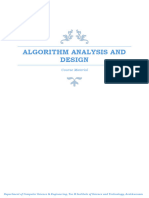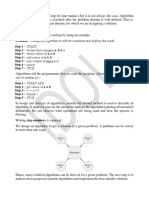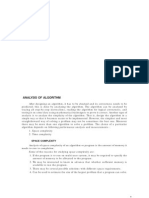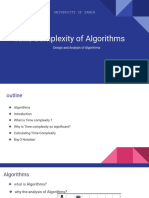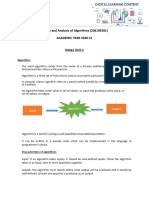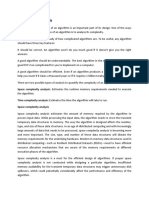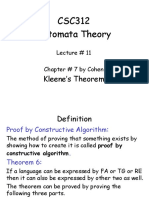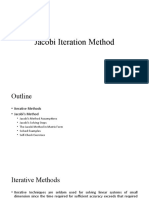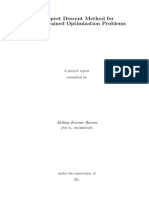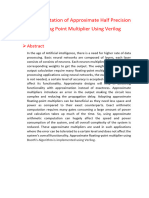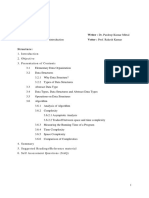0% found this document useful (0 votes)
8 views47 pagesChapter 3 Basics of Algorithm Analysis
Chapter 3 discusses the basics of algorithm analysis, focusing on algorithm complexity in terms of time and space resources. It emphasizes the importance of measuring time complexity, understanding worst-case, best-case, and average-case scenarios, and introduces asymptotic notations for evaluating algorithm performance. The chapter also highlights empirical analysis as a method for assessing algorithm efficiency in practical scenarios.
Uploaded by
2023becs076Copyright
© © All Rights Reserved
We take content rights seriously. If you suspect this is your content, claim it here.
Available Formats
Download as PDF, TXT or read online on Scribd
0% found this document useful (0 votes)
8 views47 pagesChapter 3 Basics of Algorithm Analysis
Chapter 3 discusses the basics of algorithm analysis, focusing on algorithm complexity in terms of time and space resources. It emphasizes the importance of measuring time complexity, understanding worst-case, best-case, and average-case scenarios, and introduces asymptotic notations for evaluating algorithm performance. The chapter also highlights empirical analysis as a method for assessing algorithm efficiency in practical scenarios.
Uploaded by
2023becs076Copyright
© © All Rights Reserved
We take content rights seriously. If you suspect this is your content, claim it here.
Available Formats
Download as PDF, TXT or read online on Scribd
/ 47




